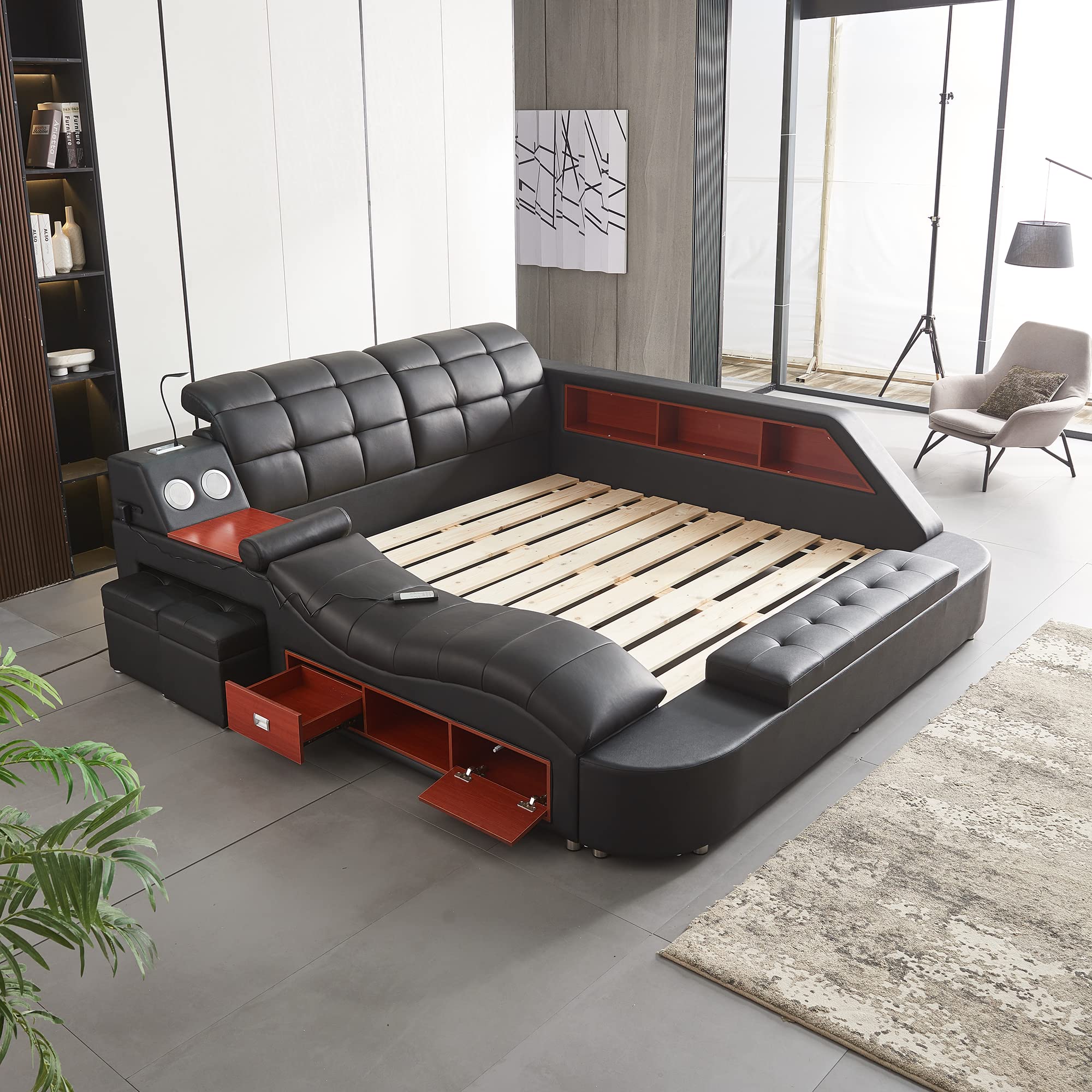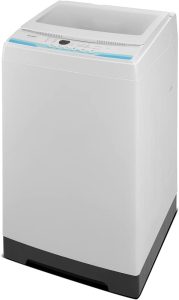Can a smart bed with a TV improve sleep quality?
Introduction
Smart beds with built-in TVs have emerged as innovative sleep solutions that combine technology and comfort. While the primary purpose of a bed is to promote restful sleep, the integration of a TV within a smart bed raises questions about its potential impact on sleep quality. In this guide, we will explore the relationship between smart beds with TVs and sleep quality, considering various factors and potential benefits that can contribute to a better sleeping experience.

Can a smart bed with a TV improve sleep quality?
Creating a Relaxing Sleep Environment
1.1. Ambient Lighting Features
Smart beds with TVs often offer customizable ambient lighting features that can create a soothing and relaxing sleep environment. The ability to adjust the lighting color, intensity, or patterns can help create a calming atmosphere that promotes relaxation before sleep. Even if the other appliances are black, it creates a relaxing and cozy atmosphere.
1.2. Sleep-Enhancing Technologies
Certain smart beds integrate sleep-enhancing technologies such as white noise or gentle vibrations. These features can help mask external disturbances and promote a more peaceful sleeping environment, potentially improving sleep quality.
Personalized Sleep Tracking and Insights
2.1. Sleep Monitoring Capabilities
Many smart beds with TVs incorporate sleep monitoring capabilities, collecting data on sleep patterns, duration, and quality. This data can provide valuable insights into sleep habits, enabling users to identify sleep disruptions or patterns that may be affecting their sleep quality.
2.2. Sleep Recommendations and Adjustments
With sleep tracking data, smart beds can provide personalized recommendations and adjustments to help improve sleep quality. These recommendations may include adjusting bed positioning, altering sleep routines, or making changes to the sleep environment to optimize sleep health.
Relaxation and Wind-Down Routines
3.1. Convenient Wind-Down Time
Having a TV integrated into the bed can provide a convenient wind-down routine before sleep. Users can relax and unwind by watching their favorite shows, movies, or other content without the need to leave their beds. This can help transition the mind and body into a more relaxed state, preparing for restful sleep. And you can set an alarm. Whether it’s wake up time or a countdown to the oven it’s perfect.
3.2. Personalized Content Selection
Smart beds with TVs offer the flexibility to choose content that promotes relaxation and can facilitate sleep. Users can select calming or sleep-inducing programs, such as nature documentaries, meditation guides, or guided sleep visualizations, to help create an optimal pre-sleep routine.
Sleep-onset Association
4.1. Associating the Bed with Sleep
Creating a strong association between the bed and sleep is a fundamental aspect of good sleep hygiene. Having a smart bed with a TV can help reinforce this association by dedicating the bed primarily to sleep and relaxation. Separating other activities, such as work or leisure, from the bed can help create a clear distinction and enhance sleep quality.
4.2. Minimizing Nighttime Distractions
Smart beds with TVs can help minimize the need for external distractions during the night, such as reaching for a remote control or leaving the bed to find entertainment elsewhere. By having entertainment readily accessible within the bed, users can minimize sleep disruptions and maintain a more consistent sleep routine. And it can help remote control other appliances to help you fall asleep more quickly.
Customized Sleep Environment
5.1. Adjustable Bed Positioning
Smart beds with TVs often offer adjustable bed positioning, allowing users to find their most comfortable sleep position. This customization can promote better sleep posture, alleviate discomfort, and reduce the likelihood of disruptive movements during sleep, potentially improving sleep quality.
5.2. Personalized Comfort Settings
With features such as adjustable angles, integrated speakers, or built-in massagers, smart beds can provide personalized comfort settings. These customizable options can contribute to a more comfortable sleep environment, reducing disturbances and enhancing overall sleep quality.
Limitations and Considerations
6.1. Content Selection and Stimulus Control
While a smart bed with a TV can offer entertainment convenience, it is important to consider the impact of content selection on sleep quality. Engaging in stimulating or arousing content close to bedtime may have a negative impact on sleep onset and quality. It is advisable to select calming or sleep-inducing content and establish a wind-down routine that promotes relaxation.
6.2. Limiting Screen Time and Blue Light Exposure
The use of electronic devices, including TVs, before sleep can expose individuals to blue light, which can interfere with the body’s natural sleep-wake cycle. It is important to establish screen time limits, reduce blue light exposure, or use blue light filters or glasses to minimize potential disruptions to sleep quality.
6.3. Personal Discipline and Sleep Hygiene Practices
Investing in a smart bed with a TV requires personal discipline and adherence to good sleep hygiene practices. Establishing regular sleep schedules, maintaining a comfortable sleep environment, and limiting external stimuli are essential for maximizing the potential benefits of a smart bed with a TV on sleep quality.
Conclusion
Smart beds with built-in TVs have the potential to enhance sleep quality by creating a relaxing sleep environment, providing personalized sleep tracking insights, facilitating wind-down routines, and offering customizable sleep settings. However, it is important to consider the limitations and potential challenges associated with content selection, blue light exposure, and personal discipline in maintaining good sleep hygiene.

